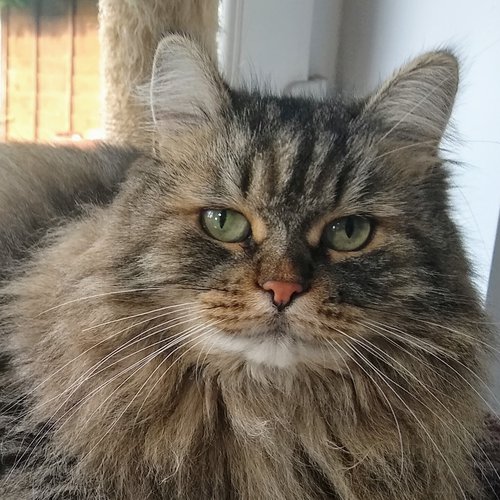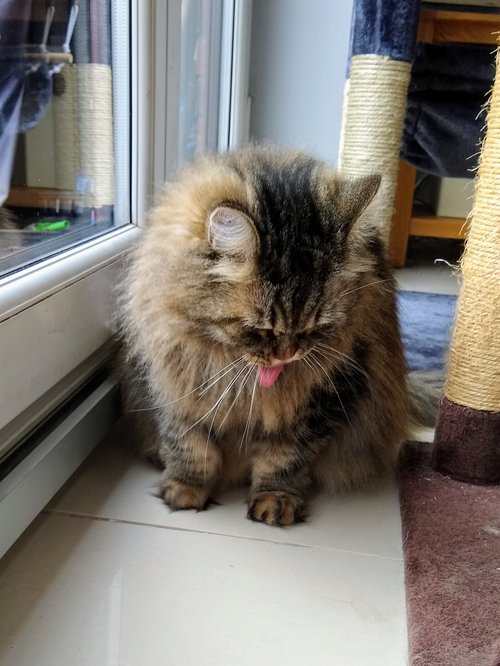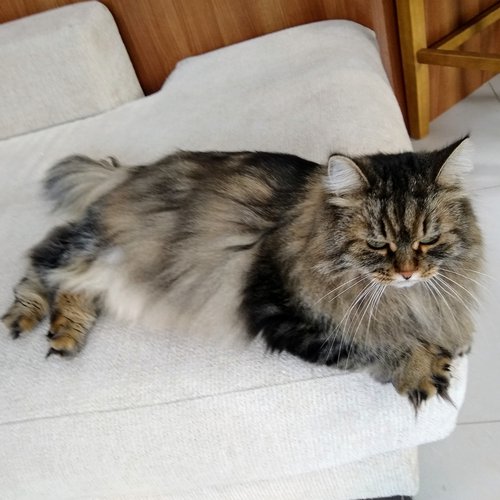Siberian Forest Cat
The first time I saw a Siberian Forest Cat, it was love at first sight. She was a massive ball of fluff, with small ears, short legs and huge furry paws.
Cats make me happy - every. single. cat. (Sorry that should be every single pet as even a little mouse makes me happy.) I love each cat for different reasons, as they all have different personalities. I do however, have a bit of a thing for long fur. So when I first met this cat, I was stunned by how beautiful she was. The feeling wasn't mutual unfortunately as she only like attention on her own terms. Seeing her run and play makes me laugh and then she reminds me that she plays with her claws out. But that makes me laugh too and it is natural behaviour which is good. She is majestic looking and it is quite a sight to see when she jumps up her cat tree.
In fact she reminds me of a cartoon cat as she moves fast but you don't see her legs move.
When I first met her, I thought that she looked like a Norwegian Forest cat but smaller and tufty in different places. Also the heads are a different shape and the paws are about three times the size.
Since my first booking with this cat, I've been reading up about the breed and I think this one is different to the standard as she isn't very vocal. She is very ladylike, affectionate on her own terms with a quiet purr and a very delicate meow. Even her 'chirps' to the birds are quiet. Her tail was very expressive and a lot of my photos were blurry as it moved so quickly. Her tail 'swishes' in a way I can't describe.

Siberian Forest Cat
History
Siberian cats originate from Russia and were first documented as being in the UK in the 1800's. However, they weren't recognised and classified by the International Cat Association in 1996.
Body
On average, Siberian cats weigh between 8lbs and 17lbs. The females are a lot smaller than males.
Health
Generally, Siberian cats have an average life span of up to 15 years. Typical heredity health problems in the breed may be hypertrophic cardiomyopathy (thickened heart muscle) and pyruvate kinase deficiency (which causes anaemia).
Fur
The fur is the first thing anyone will notice about this breed. There is a lot of it but it is very fine. Grooming is required regularly. As the fur is triple layer, it is water resistant as well as providing warmth.
Due to their Russian origins, this means even the underside of their paws are covered in fur.
There are lots of different colour variations but tabby tends to be the most popular.
Temperament
These cats like routine and aren't fond of change. They are active and like to jump; they like to dig and are fond of water. They are intelligent and inquisitive. They make good pets as they like human interaction.
They are great hunters. I'm not surprised at this due to the size of the paws, the speed at which they move, their interest in talking to birds and their tenacity at playing with a toy.
Saliva
The most amazing thing about Siberian Forest cats, is that the protein saliva is different to other cats. This means they may be suitable for some cat allergy sufferers. How cool is that? Allergic to cats except the breed which is a massive fluff ball with special cat lick!
Science fact: It is often the saliva that humans are allergic to. As cats wash themselves by licking, this spreads the allergen. For more technical information about this, please look at hypoallergenic cats website.
For more information about this stunning breed, please read here.
*** Personalities and traits will vary between cats even in the same breed.

